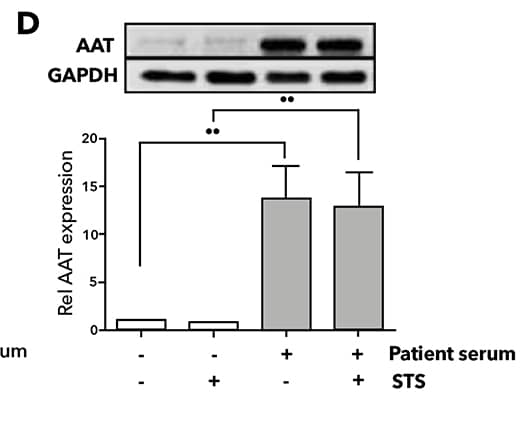The loading controls on our antibody database are widely used in gel electrophoresis and Western blotting studies. Products like the GAPDH antibody detect "housekeeping" proteins which are abundantly distributed in cells. This makes them useful for checking the even loading of gel samples, and the even transfer of proteins at the blotting stage. They also serve a purpose in quality control, by verifying reagents are working correctly, and in the standardization of experimental results. All the loading control proteins on our antibody database are highly expressed throughout the eukaryotic cellular system, though some are localized to one particular area (e.g. COX IV is specific to the inner mitochondrial membrane.) Loading controls may be subcellular fractions, or entire proteins such as GAPDH.
Glyceraldehyde 3-phosphate dehydrogenase, or GAPDH, is a stable metabolic enzyme composed of four 30-40 kDa subunits. It is highly expressed in most cells, playing an essential role in the glycolytic pathway. However, GAPDH antibody studies have shown the protein to be involved in a number of other processes, including DNA replication and repair, and initiation of transcription. It has been reported to bind to a number of other proteins, including actin and tubulin, and may play a role in the regulation of apoptosis, as GADPH migration to the nucleus has been reported in apoptotic cells. The protein is also implicated in several pathological diseases, including Alzheimer's disease and cancer.
Because GADPH is an essential housekeeping protein highly expressed in most cell types, GAPDH mRNA levels are often used as standards in mRNA expression studies. GAPDH is also a popular loading control for Western blot assays. Other applications for the GAPDH antibody include RT-PCR (Reverse transcription polymerase chain reaction) studies, immunoprecipitation, immunofluorescence and immunohistochemistry.
Bio-Techne offers GADPH reagents for your research needs including:
